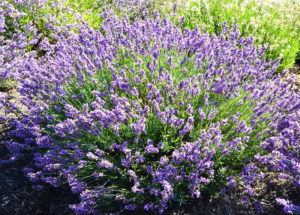English Lavender ‘Imperial Gem’
* Common name: English lavender ‘Imperial Gem’

Lavender ‘Imperial Gem’
Credit: Richard Hawke/Chicago Botanic Garden
* Botanical name: Lavandula angustifolia ‘Imperial Gem’
* What it is: Lots of lavender varieties have come and gone over the years, but this is one of the best for its full-blooming habit, its hardiness, and its compact, bushy form.
‘Imperial Gem’ also has silvery foliage and lots of bee- and butterfly-attracting purple flower stems that appear from June through August. Like all English lavenders, it’s also fragrant, drought-tough, and not a favorite of deer or rodents.
Despite dating to 1980 and being the top-scoring lavender among 40 varieties compared in a six-year Chicago Botanic Garden trial, ‘Imperial Gem’ can be hard to find in garden centers. It also was good enough to earn a coveted Award of Garden Merit from Britain’s Royal Horticultural Society.
* Size: Grows 18 to 24 inches tall and about three feet wide.
* Where to use: Think Mediterranean conditions – heat, lots of sun, and well drained gravelly/alkaline soil. Sunny gardens, west- or south-facing foundations, and edging walks and driveways are all good sites.
Although technically an herb with lots of uses (potpourri, dried flowers, cooking), English lavender more often shows up in flower gardens than just herb gardens.
* Care: The most important care factor is planting lavender in a very well drained spot in the first place. Wet or poorly drained clay soil are lavender death traps, especially over winter.
Beyond that, give lavender neutral to alkaline soil. Scatter lime around plants each spring if your soil leans acidic.
Fertilizer is usually not needed and neither is supplemental watering after plants establish a year or two after planting.
Shear or snip off flowering stems right after plants bloom to encourage compactness and fresh new growth.
* Great partner: Pink roses and/or boxwoods are naturals for a “cottagey” yet semi-formal look. Dwarf conifers also make good partners and generally like the same sunny and well drained spots as lavender. Pink summer-blooming perennials such as purple coneflowers, pink garden phlox, pink lilies, and liatris are some of the best perennial partners.







